What is Revenue Marketing? Connecting Marketing with Revenue
Updated on 13th Feb, 2023 by Nilangan Ray
DEFINITION
Revenue marketing refers to the holistic process of identifying specific channels in marketing that offer revenue growth and aligning sales and marketing efforts with revenue. In this form of marketing, a more comprehensive approach is followed where both the marketing team and the sales team work together to maximize ROI.
“Revenue marketing” is the hottest trend to come out of the industry in the last few years and it can definitely make you go ‘huh?’ when you first hear it.
Revenue Marketing? What’s that supposed to mean?
Hasn’t marketing been about revenue the whole time?
Is it another marketing buzzword that amounts to a whole bunch of nothing?
Nope, revenue marketing is very real. So real, an entire marketing department has formed from it. Many companies now have a chief revenue officer and a revenue marketing team. It is here to stay and its importance will continue to gain traction parallel to data-driven marketing.
Revenue marketing is marketing working with sales to attribute their campaigns directly to revenue and engaging with leads even after sales reps take them over.
A revenue marketing system involves a major shift in focus for the team and the prioritization of a lot more targeted and goal-oriented marketing tasks. And, it goes way beyond traditional lead generation and personalized marketing. Let’s dive deeper.
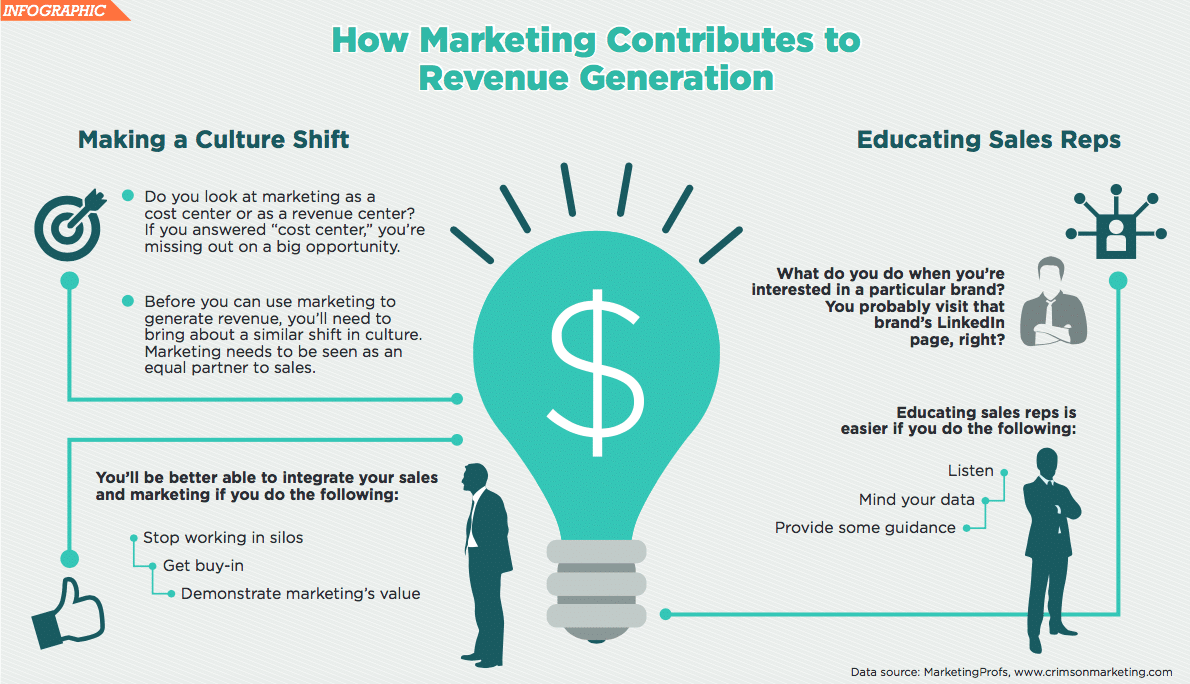
Infographic Source: cutimes.com
What is revenue marketing?
The goal of marketing is to generate revenue, of course. But, things often get complicated and marketing teams fail to directly connect campaign specifics to revenue, especially in the B2B space.
Earlier marketers would generate leads, qualify them, send them to sales and consider their job to be done. In this system, the role of the marketing team pretty much ends at handing over the generated leads to the sales team, where they pursue the leads further. Sales would also need to do nothing on leads that are not ready for them to close. The buying process has changed and the status quo has changed with it.
By definition, revenue marketing refers to the holistic process of identifying specific channels in marketing that offer revenue growth and aligning sales and marketing efforts with revenue. In this form of marketing, a more comprehensive approach is followed where both the marketing team and the sales team work together to maximize ROI.
Marketing also needs to have a closed-loop system and fetch data from sales in a 2-way sync scenario (instead of the most commonly used marketing to sales data transfer). It is the combined effort of the sales and marketing team to drive revenue growth in a predictable way, by creating a constant and continuous loop of feedback. It seeks to develop strategies that can be effectively repeated to drive new customer acquisition and in turn predict sales and revenue.
Here’s what revenue marketing aims to achieve:
- Generation of sales-qualified leads and driving them straight into the sales funnel.
- Successful attribution of sales to campaign specifics for replication.
- Aiding the smooth and solid journey of customers across the funnel.
- Marketing enablement even after leads get passed on to sales.
- Aligning sales and marketing to work towards the common goal of generating revenue.

Rise of revenue marketing
The revenue marketing concept was brought to light with the book, Rise of the Revenue Marketer, back in 2010. This happened in the time period when digital marketing automation, data-driven marketing, and CRMs, in the form we see today, started to gain huge momentum.
Like we mentioned earlier, the marketing status quo has changed and marketers are now closely tracking and working on customers till the end of the buyer’s journey. Marketers continuously engage with buyers even after conversion for retention and upselling.
The latest CRMs and marketing automation solutions provide a 360-degree view of customer relationships including data on the impact of marketing activities, making it easier for the marketing manager to monitor the outcome of every penny invested in marketing.
With a clear view of the impact of marketing campaigns on lead generation and the impact of further marketing activities leading to conversions, the journey reveals at what point these leads turn into revenue-generating customers.
Importance of revenue marketing today
According to a study by Gartner a potential buyer in the B2B industry spends a good majority of the time researching brands and products independently, mostly online. Only 17% of the time is spent actually talking to a vendor.
Moreover, almost 63% of buyers prefer not involving any sales reps in their search. They prefer doing research on their own.
This means that a sales executive gets a very small window to make his case, convince the buyer of the quality of his products, and induce action from the buyer. This also means your low-touch conversion system needs to provide the data marketing needs to connect with revenue.
For the same reason, a lead pursued separately by the sales team has a statistically lower chance of converting into a sale. Of course, this depends on the type of customers and the industry. High-ticket customers would still prefer to talk to sales. A holistic approach allows both the marketing team and the sales team to pursue the lead through different methods and improve the prospects.
To put this into perspective, here’s an example:
Marketing engagement – A prospect visits your website and engages with your copywriting and case studies. He/she signs up.
Sales Engagement – He/she then ends up having some quick conversation with your sales team on live chat.
Marketing engagement – He/she continues to engage with marketing content and emails (drips, newsletters, etc.) even after starting the conversation with sales.
Sales Engagement – Sales rep later closes the deal.
Marketing engagement – Customer continues to receive marketing communications after buying.
In fact, a study from MarketingProfs has shown that organizations with more accurately aligned sales and marketing strategies have been able to achieve almost 38% higher conversion rates as well as 36% higher customer retention rates.
Clearly, revenue marketing is the way to go in this day and age where people are more aware of their needs and businesses have access to better data.

Image Source: pgi.com
What makes a winning revenue marketing strategy?
A winning revenue marketing strategy needs both marketing and sales teams having a close grip on all stages of the buying process while aligning with each other in a cohesive manner. In order to make an impact in your customers’ minds and lead them towards making a purchase from you, there is a need to capture their attention and sustain it throughout the journey by communicating the values of your product at all times. And for this, you need to strategically connect with them through both your sales and marketing channels and serve relevant content and empower them in accordance to the stage they are in on the pipeline. That is how a revenue marketing strategy works.
Here are the steps involved in creating a winning revenue marketing strategy.
Step 1
Step one is to study and understand your target audience. This involves carefully analyzing what your buyer needs and figuring out the buying cycle for them. Your buyer’s needs could be anything from getting a task or a job done efficiently to getting more knowledge or insights into a subject they are researching. You need to get down and dirty with the details and map out the buying cycle starting from creating awareness of their problem to inducing them to make a purchase decision. Understand the journey of the buyer very carefully throughout the cycle so that you know exactly where to strike to influence them at each stage of the cycle.
Step 2
Step two involves the more difficult task of integrating your sales and marketing team and preparing to launch more aligned campaigns. For this, both your sales and marketing teams need to be aware of each other’s individual goals and objectives, KPIs, and other aspects along with the common goal of pursuing a lead together. A common strategy needs to be planned out after discussing the buyer’s behavior, buying cycle, and profile so that everyone knows what to do at each stage.
Steps should also be taken to ensure seamless and smooth communication across both departments so that no opportunity is missed. CRM tools and workflow management tools can be utilized to attain a reliable channel of communication with real-time updates on the progress of the campaign at each stage.
With Salespanel’s integrations, we have created a two-way sync functionality that syncs data from marketing to sales and sales to marketing in real-time. So for example, anytime a lead moves further in the deal stage, marketing data and their segments would reflect that information to trigger specific nurturing campaigns. Marketing can also use this data for their reports and analytics. The marketing and sales teams can also share a common language of milestones on customer journeys. These milestones can be represented by automated tagging in real-time enabled by Salespanel’s website triggers. The revenue marketing funnel needs sales and marketing to work together with the marketing team facilitating this function.
Step 3
Step three involves the execution of the aligned campaigns where every member of the sales and marketing team is up to date with the progress of the lead within the sales funnel. Efforts need to be taken to strategically reach out to the buyer through different means, based on the knowledge gained in step one and the actions planned in step two. With the right tool (Spoiler: Salespanel), this can be automated on any scale.
Step 4
The last step is to promptly analyze the performance of your combined marketing campaigns and make improvements effectively. Track important metrics relating to your day-to-day activities as well as your overall revenue generation efforts. Taking combined metrics will help you take the right measures to improve the effectiveness of your entire revenue marketing strategy.
Connecting marketing with revenue
As mentioned before, marketing has always been associated with generating leads and handing over the leads to the sales team. This makes the marketing team a mere cost center with separate goals. It is only the sales team that is associated with converting the leads into revenue. The goals of both the teams remain on separate plates even though the end goal and the subject is the same. The goal of the marketing team used to be only limited to generating leads. In many cases, sales teams would complain that the leads generated by marketing were not good enough resulting in a blame game.
There is a need to shift the mindset of the marketing and sales teams to think from a comprehensive point of view. Marketing VPs need to be given the right metrics to link their activities to revenue and shift their focus from lead generation. A culture of collective responsibility and accountability needs to be established, rather than individual and team responsibilities.
When looking at metrics, instead of narrowing it down to team-specific activities, like “which high-quality leads were sourced by the marketing team” a more detailed approach can be taken to see which leads were sourced by which specific channels, keywords, campaigns, etc. Depending on the channels and combined campaigns that helped generate the most amounts of high-quality leads, the strategies can be applied repeatedly to achieve similar outcomes over and over again. This helps in scaling successful strategies and weed out underperforming strategies.
Top 4 revenue marketing tools
Revenue marketing tools help you connect marketing to revenue by enabling you in the measurement of marketing efforts. This is facilitated using the likes of activity analytics, conversion rates, customer values, etc. Here are our pick for 5 revenue marketing tools.
Salespanel (Web Analytics and Attribution)
Salespanel is a B2B web analytics, customer journey tracking, and lead qualification software that helps you track first-party data and use it to measure revenue-generating activities. Its analytics system, for example, helps marketing teams understand which channels and marketing activities are bringing customers. Lead scoring helps teams prioritize leads who have higher ticket sizes or are more likely to purchase. Additionally, the tool connects with other sales and marketing tools in your arsenal to send and receive data for your revenue operations.
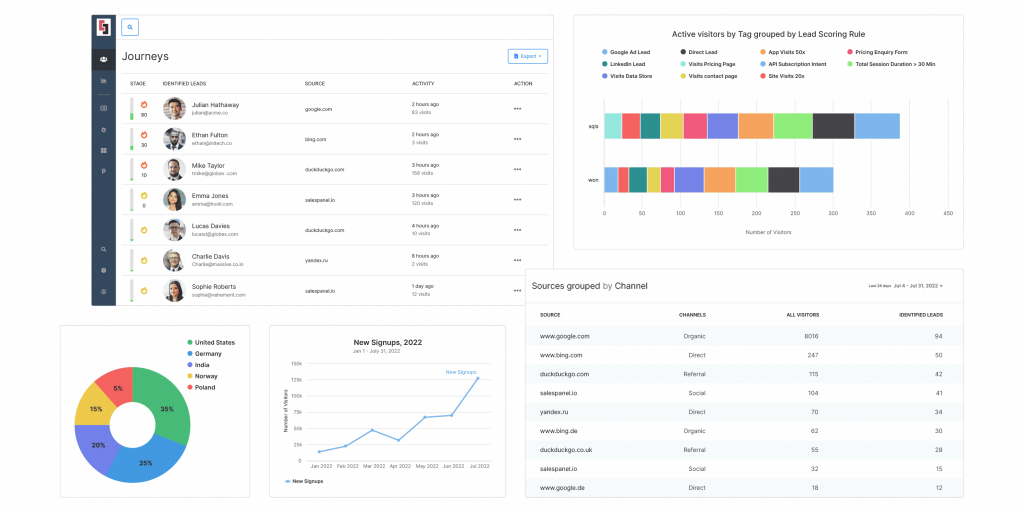
Hubspot CRM (Customer Relationship Management)
Hubspot and other CRM systems help you aggregate customer data and provide you with a centralized platform for your revenue marketing operations. Hubspot helps businesses track lead data in their CRM and brings crucial information to their sales reps to help them close more deals. The tool syncs with other applications like Salespanel, webform tools, email marketing tools, etc. to amalgamate your data. This helps you understand customer interactions as you engage them.
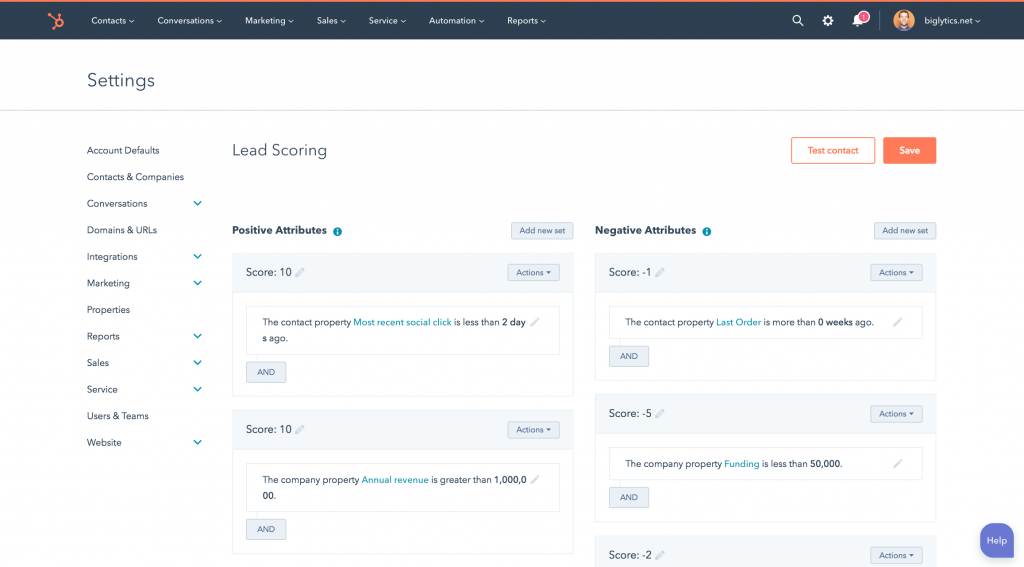
Mailchimp (Email Marketing Software)
Mailchimp is a popular email marketing automation software that can enhance your revenue marketing efforts. By using Mailchimp, you can use various email marketing strategies to engage and convert customers.
Mailchimp can be used to send targeted and personalized email campaigns to your subscribers and various audiences. For example, you can segment users who have specific characteristics and send emails that will help you convert them. Mailchimp also provides robust analytics and reporting feature to help you understand interactions with your newsletters and other email campaigns.
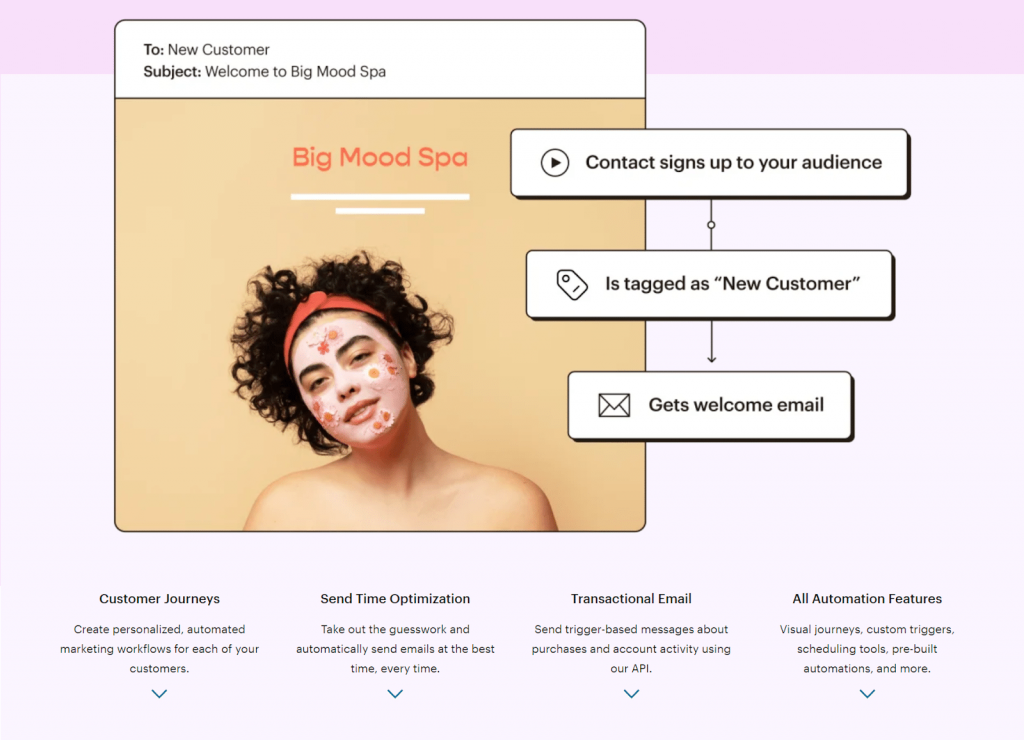
Ahrefs (SEO)
For businesses who generate revenue from organic content marketing, an SEO tool is critical for their revenue generating operations. Ahrefs, in particular, is our tool of choice. This product helps you find new keywords to create content for, monitor the activities of your competitors, and also helps you with other SEO related operations.
If you aim to increase your rankings in Google and your overall traffic to generate revenue, Ahrefs and other SEO tools like Google Search Console should be in your arsenal.
These are our picks for revenue marketing products.
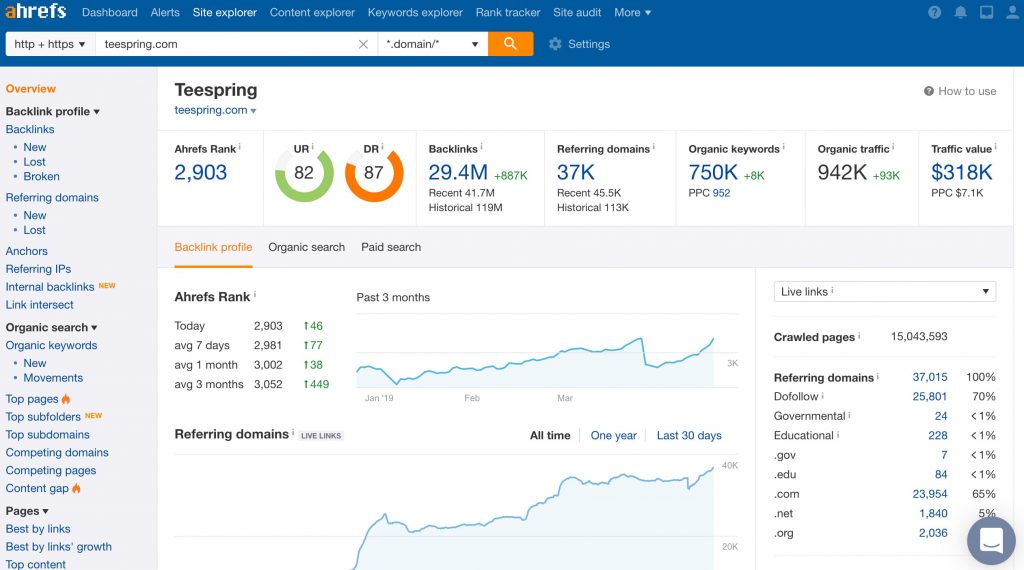
Image Source: Ahrefs
Revenue marketing team and the role of the CRO
The massive shift in focus of the marketing and sales teams from lead generation and conversion to increasing revenue collectively leads to the emergence of a new middle-level manager – the Chief Revenue Officer. The CRO naturally holds responsibility for all aspects of revenue generation including the combined performance of the sales and marketing staff in their revenue marketing strategies. It is not simply the extended version of a sales and marketing VP, but a more revenue-focused managerial position, who constantly analyses new revenue generation opportunities and provides strategies, along with the resources to bring home the revenue.
The CRO’s role will be heavily data-driven and he will be pulling the strings to make sense of the numbers. His team will consist of a data analyst, a VP, demand generation experts, a creative marketer, and a technical/product marketer. We will discuss the role of the CRO and his/her team in detail in a future article.
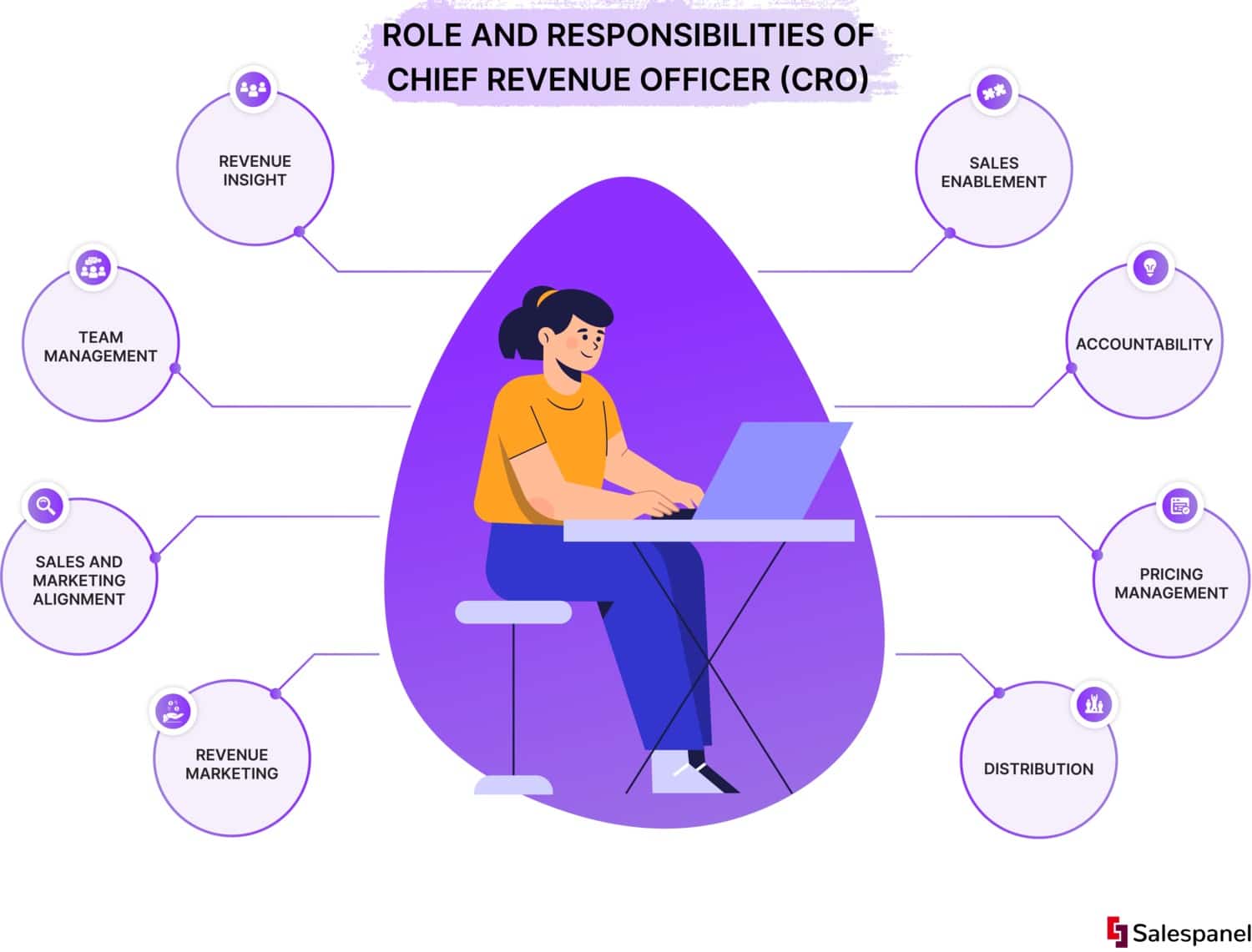
With time, such a complimentary office culture where revenue generation is seen as a collective responsibility will lead to the emergence of a revenue marketing team as a whole, with the CRO leading the activities and taking measures to optimize revenue marketing efforts.
Sell more, understand your customers’ journey for free!
Sales and Marketing teams spend millions of dollars to bring visitors to your website. But do you track your customer’s journey? Do you know who buys and why?
Around 8% of your website traffic will sign up on your lead forms. What happens to the other 92% of your traffic? Can you identify your visiting accounts? Can you engage and retarget your qualified visitors even if they are not identified?


